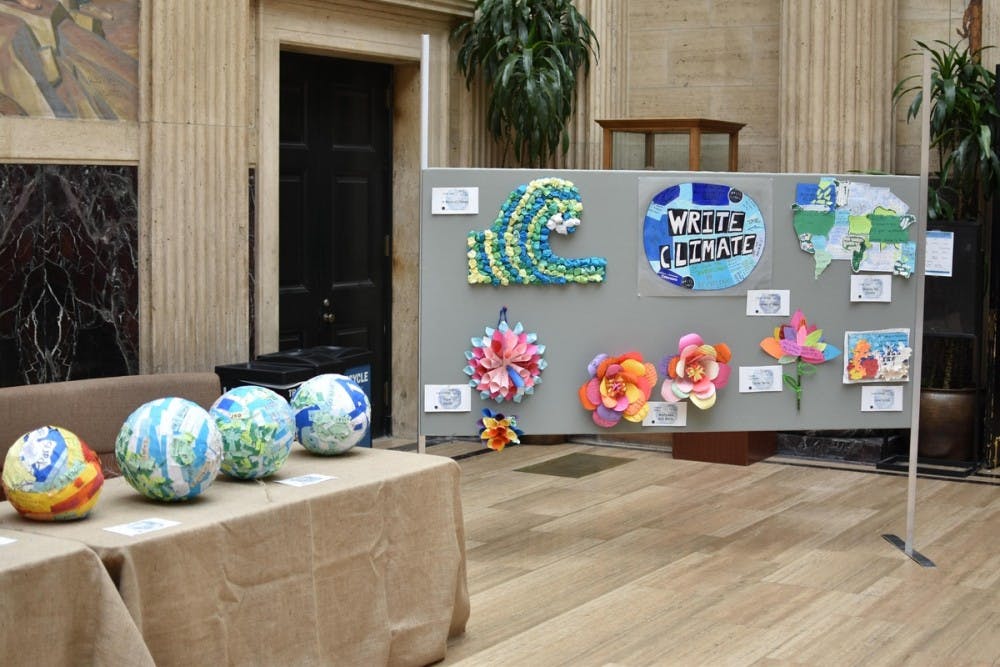The group “Write Climate” has sponsored a climate change awareness exhibit displayed during Earth Week in Clark Hall. Write Climate is a group of University students who meet to advocate for the fundamentals of climate-related science and policy awareness through art.
The exhibit was displayed in Clark Hall April 17 to April 23 and was previously displayed at the Amphitheater. The components of the exhibit were paper-based and ranged from a board of sticky-notes inscribed with responses to why students and community members fought for climate change to a tsunami art piece composed of crumpled pieces of paper.
On its website, Write Climate describes itself an interdisciplinary group of students from a variety of schools on Grounds, including the College, Engineering school and Architecture school.
Environmental Sciences Prof. Deborah Lawrence organized EVSC 1559: Words on Paper: History of Climate Science, Policy and Art, the weekly class in which Write Climate meets.
Lawrence said the students’ process for creating the art began with reviewing texts in climate science and policy, including pieces as far back as 1824. After reviewing climate policy and science texts, the students tabled on Grounds, asking passersby to write on paper what worries them about climate change, what they do in terms of sustainability or about a certain concept of climate change and policy.
In total, the class received responses from about 1,200 people. The paper responses were then turned into art at the discretion of the students in the class.
“This is a different way of communicating about climate change,” Lawrence said about the exhibit. “We are trying to grab people's attention in a new way … with a connection based on our shared climate story at the very heart of it all.”
Second-year College student Maame Eghan participated in the exhibit as part of the requirements for the class taught by Lawrence. She and a partner produced a 3D Earth by manipulating paper slips containing the written pieces gained from tabling sessions.
Eghan said she believed the exhibit was important because it created awareness to both the current beauty of the Earth and what a future affected by climate change might look like.
Sade Storthz is a first-year College student who also participated in the exhibit through EVSC 1559. She is on the documentary crew of the class but also worked with a partner to create a sculpture.
She agreed with Eghan’s sentiment that the significance of the exhibit was in communicating the realities of climate change. By asking students and faculty both why they care about and how they will act on climate change, she said she hopes that those same individuals will incorporate incremental lifestyle changes.
She said that she liked the involved nature of the exhibit and how it engaged others outside the class, noting that simply seeing the amount of people involved in creating the art and responses was empowering.
“The artists weren’t limited to our class,” Storthz said. “Everyone who stopped by our tables and wrote something is helping to raise climate change awareness and played a role in creating the art.”
Lawrence stated that the goal of creating awareness about climate change was achieved.
“Perhaps the best thing about it was that we were able to reach out to people who really never think about climate change,” Lawrence said. “We all need to think about climate change.”







